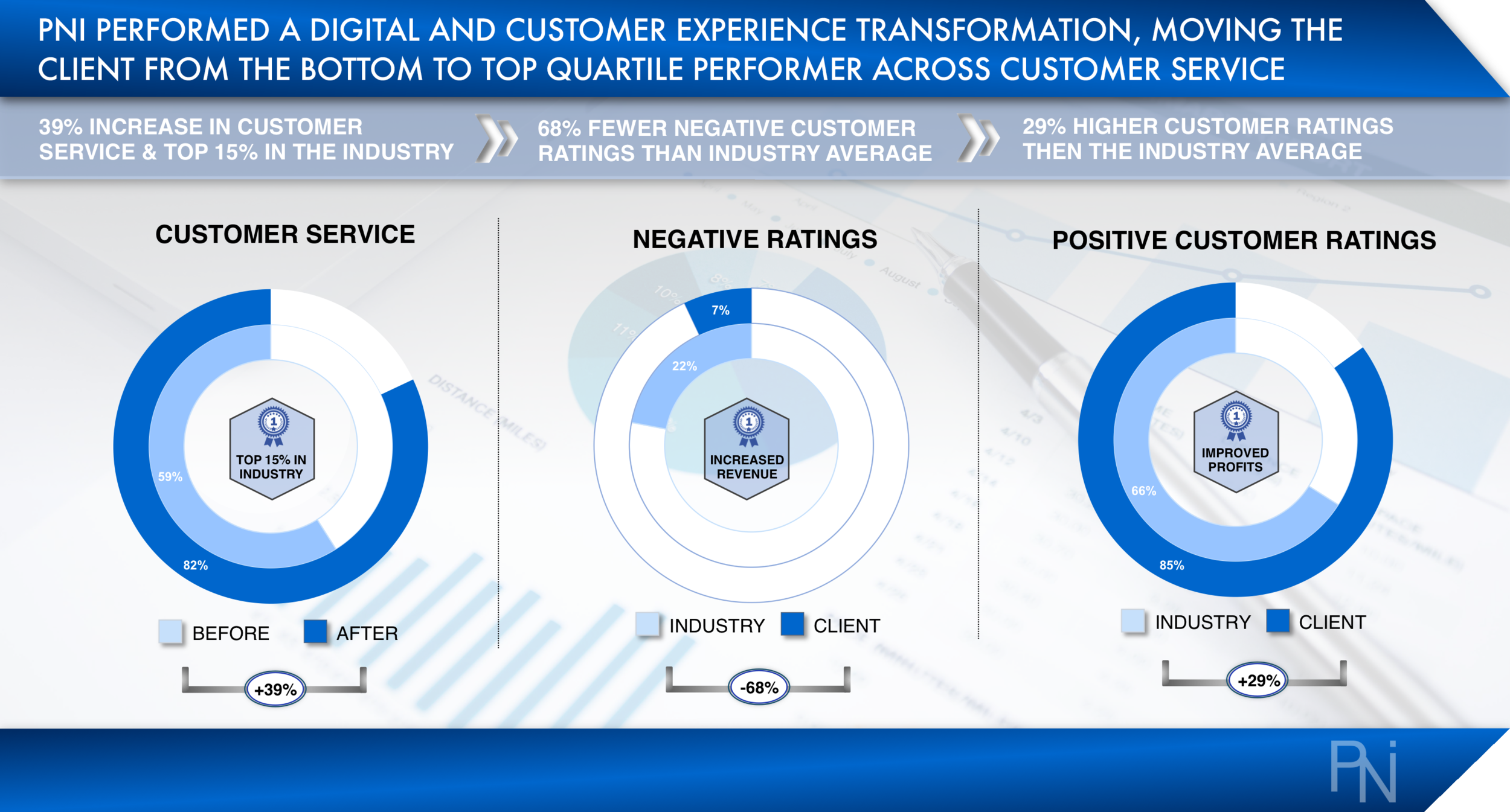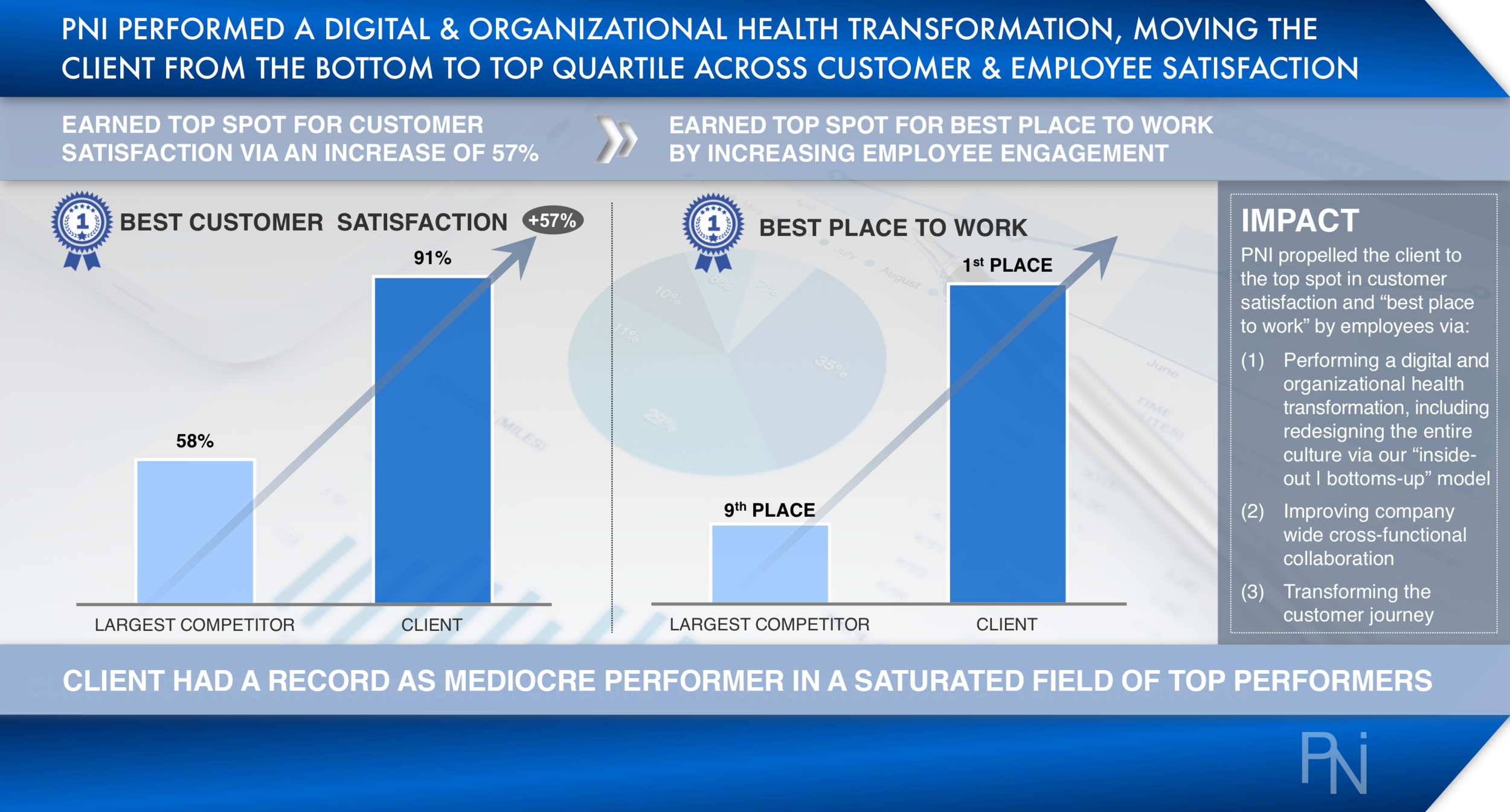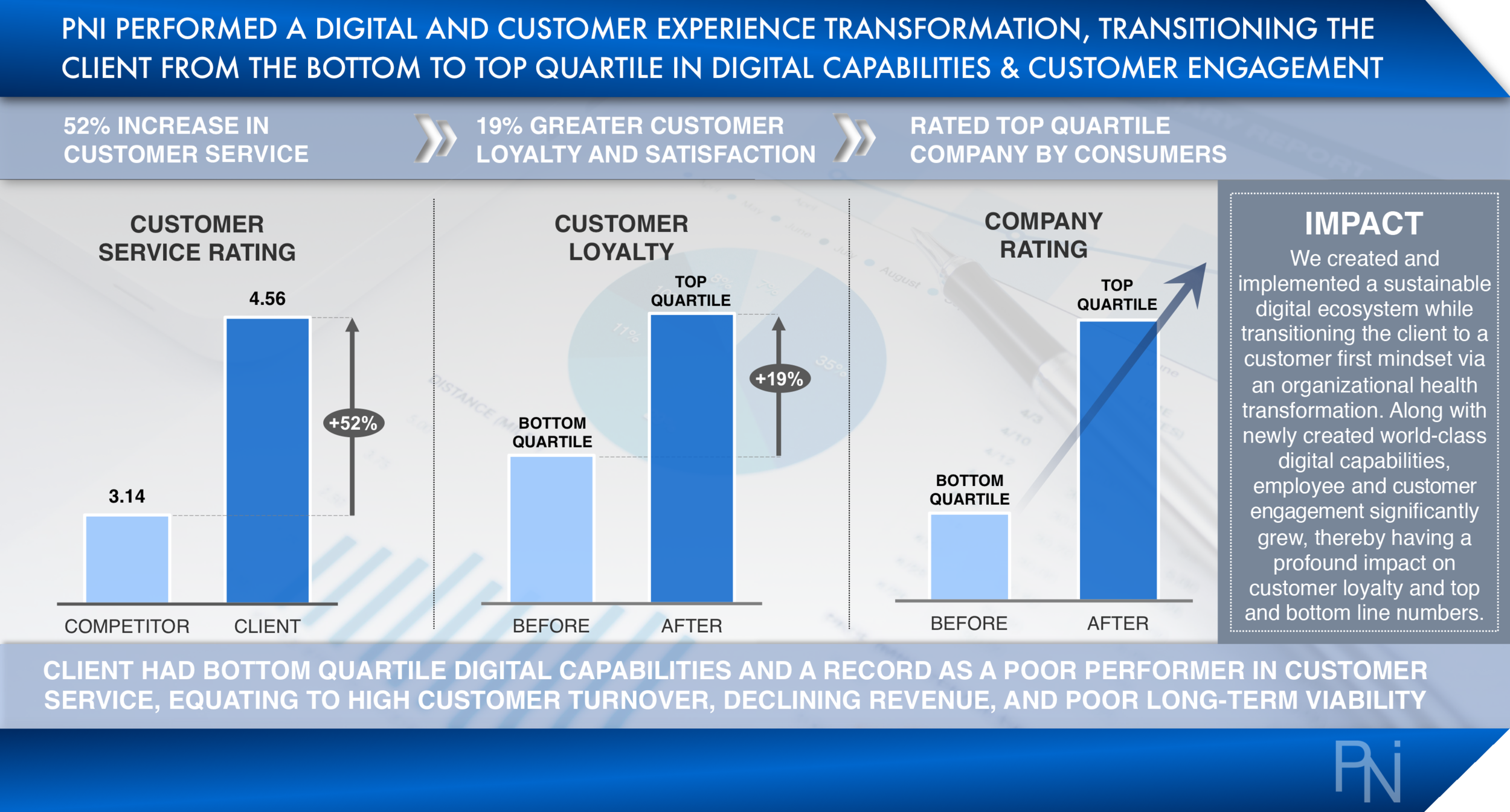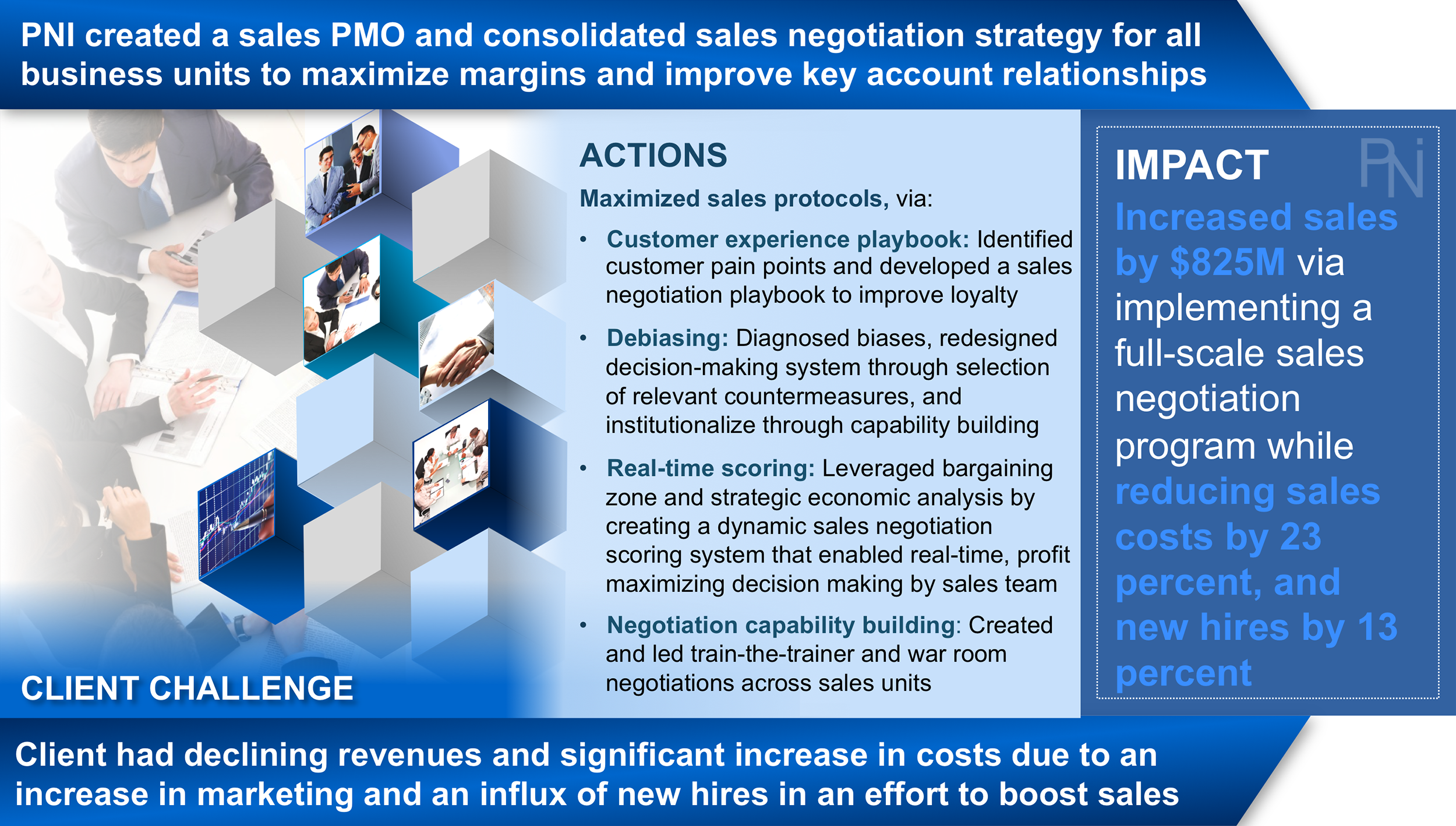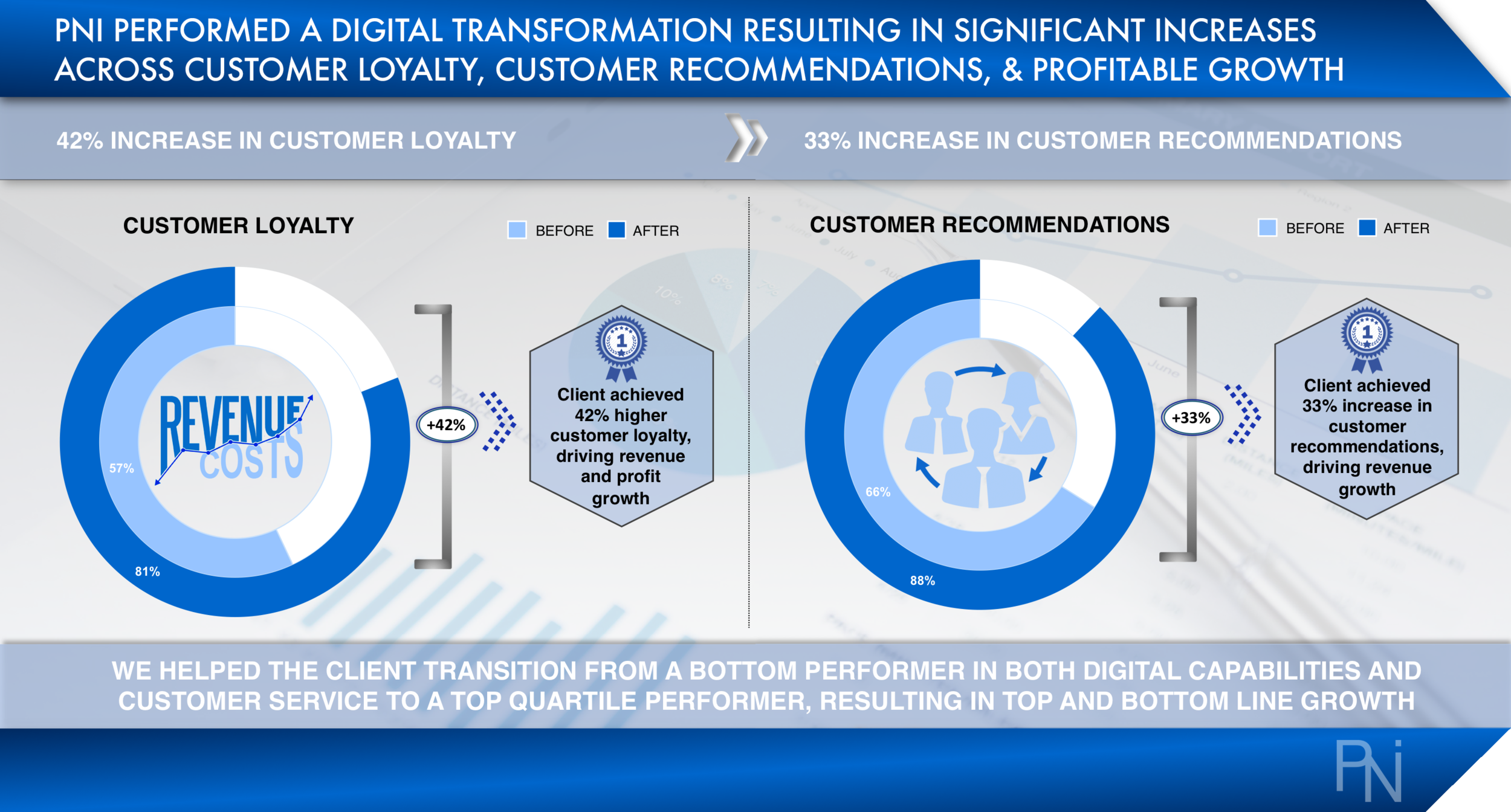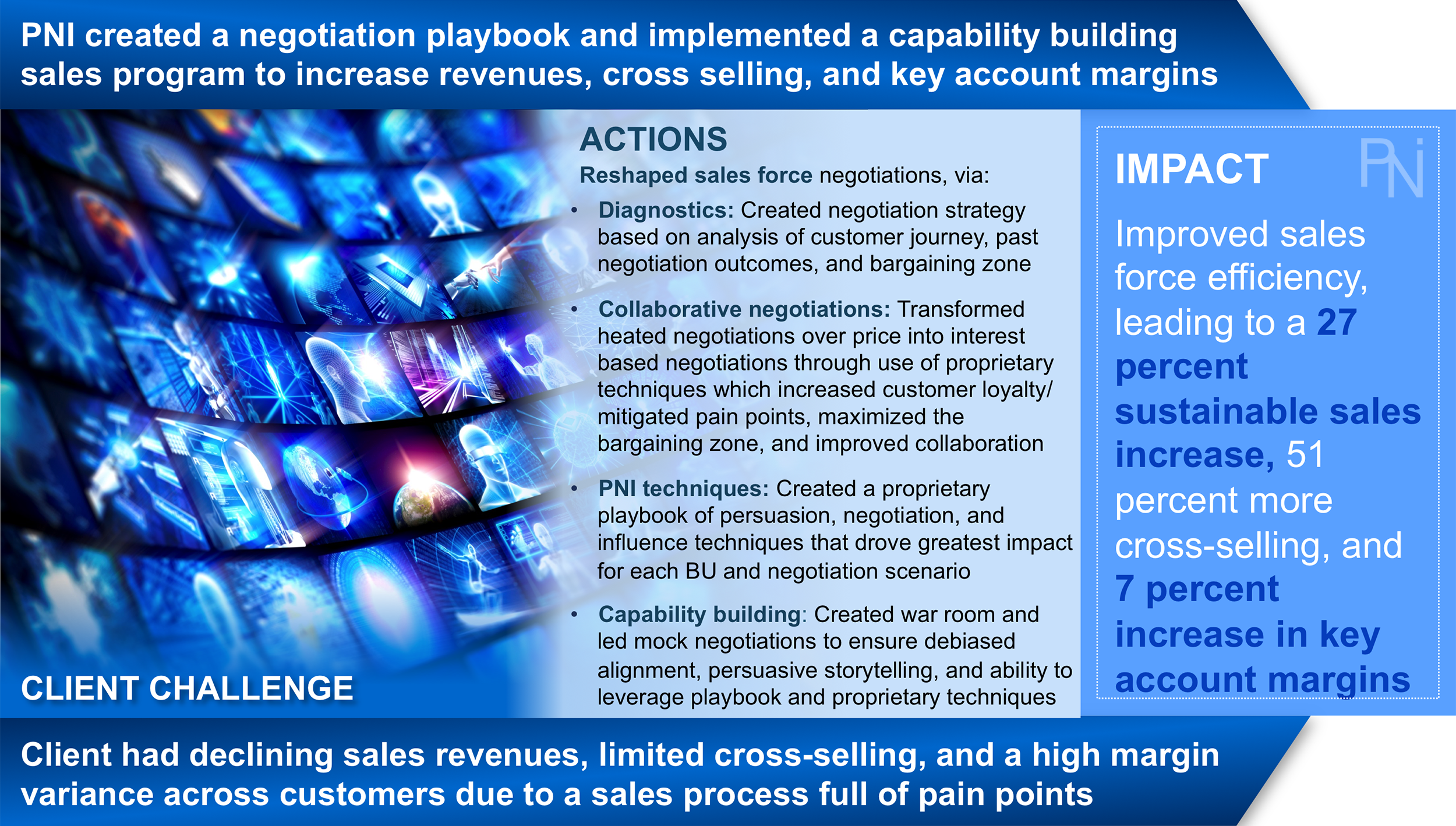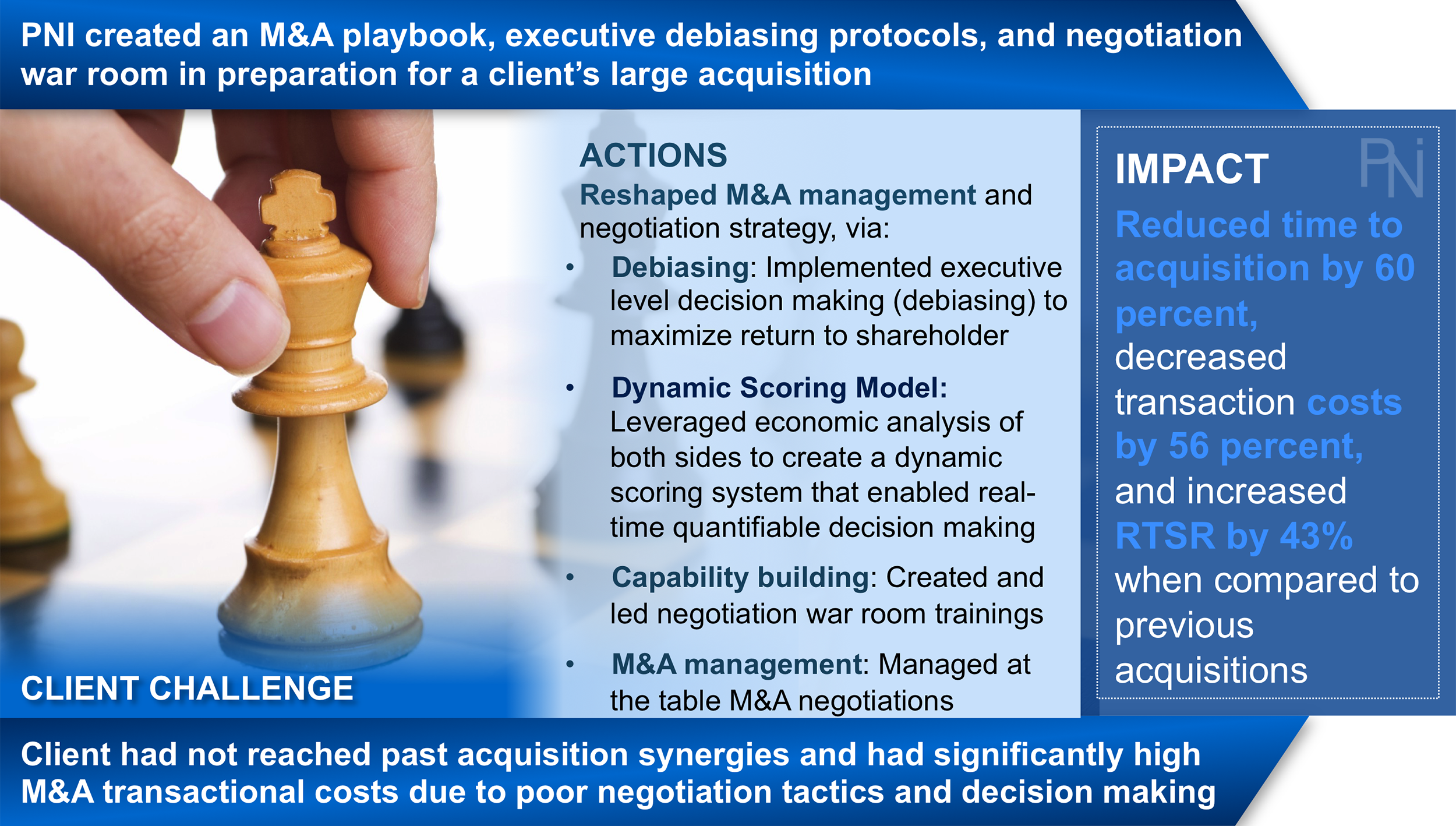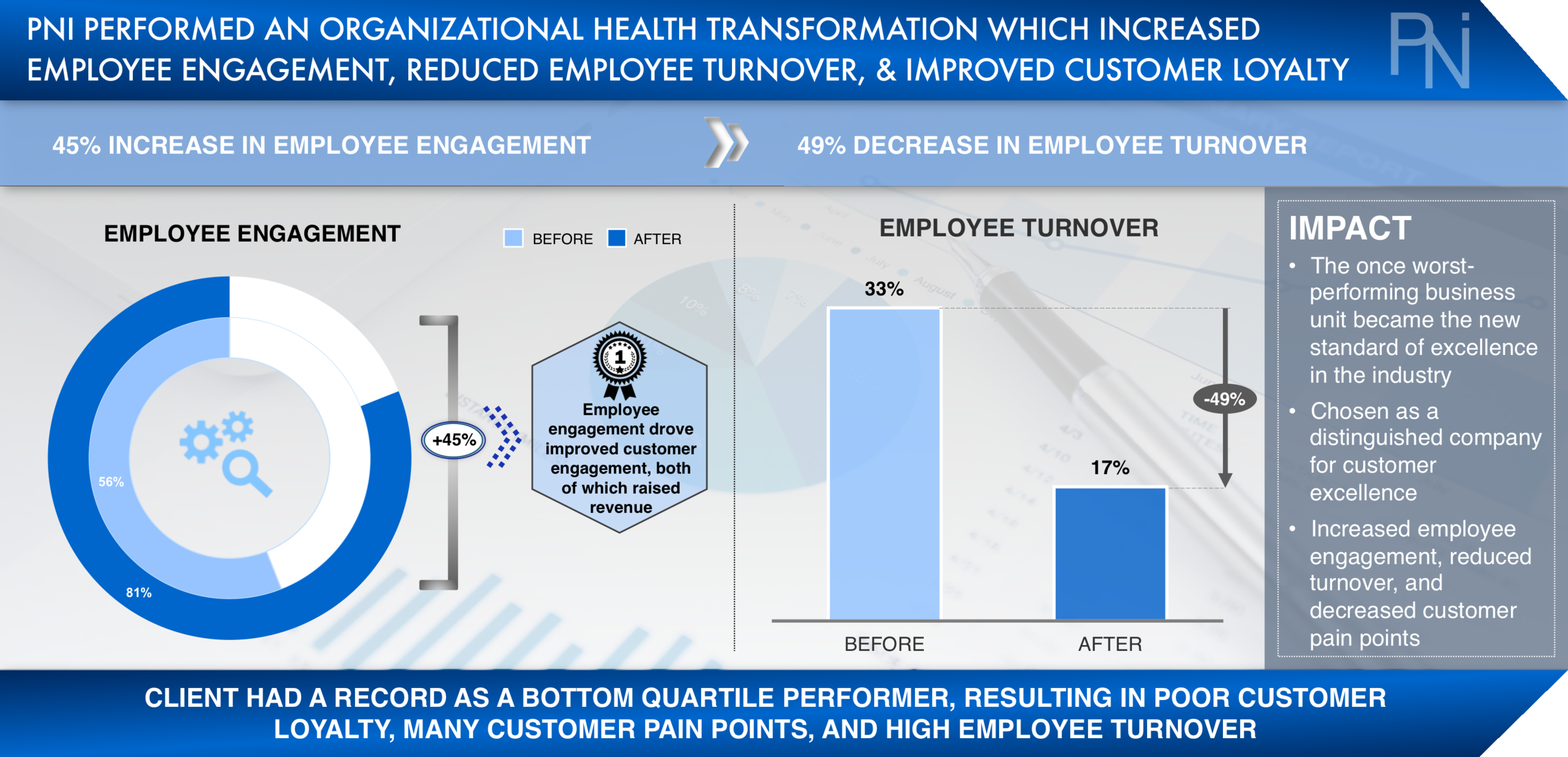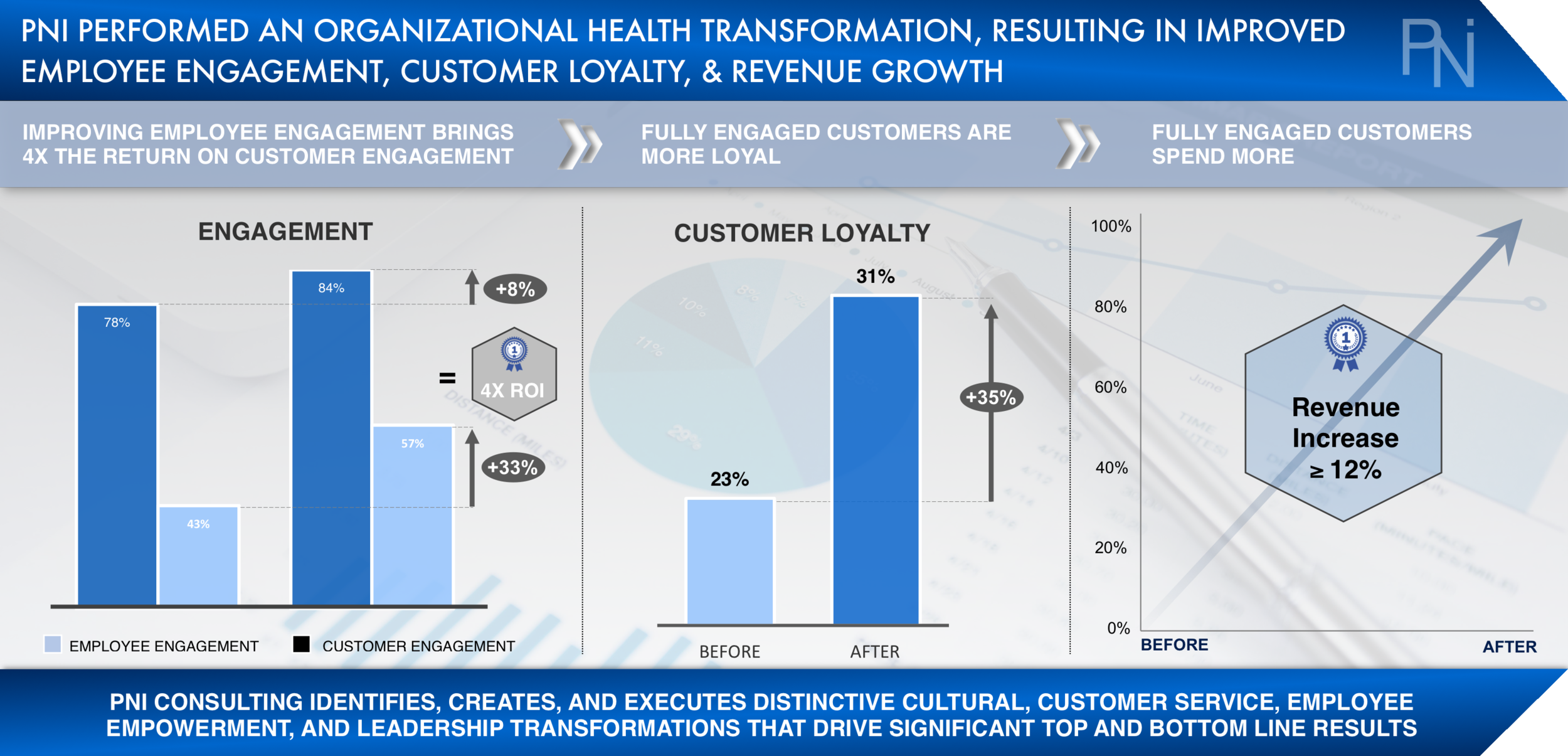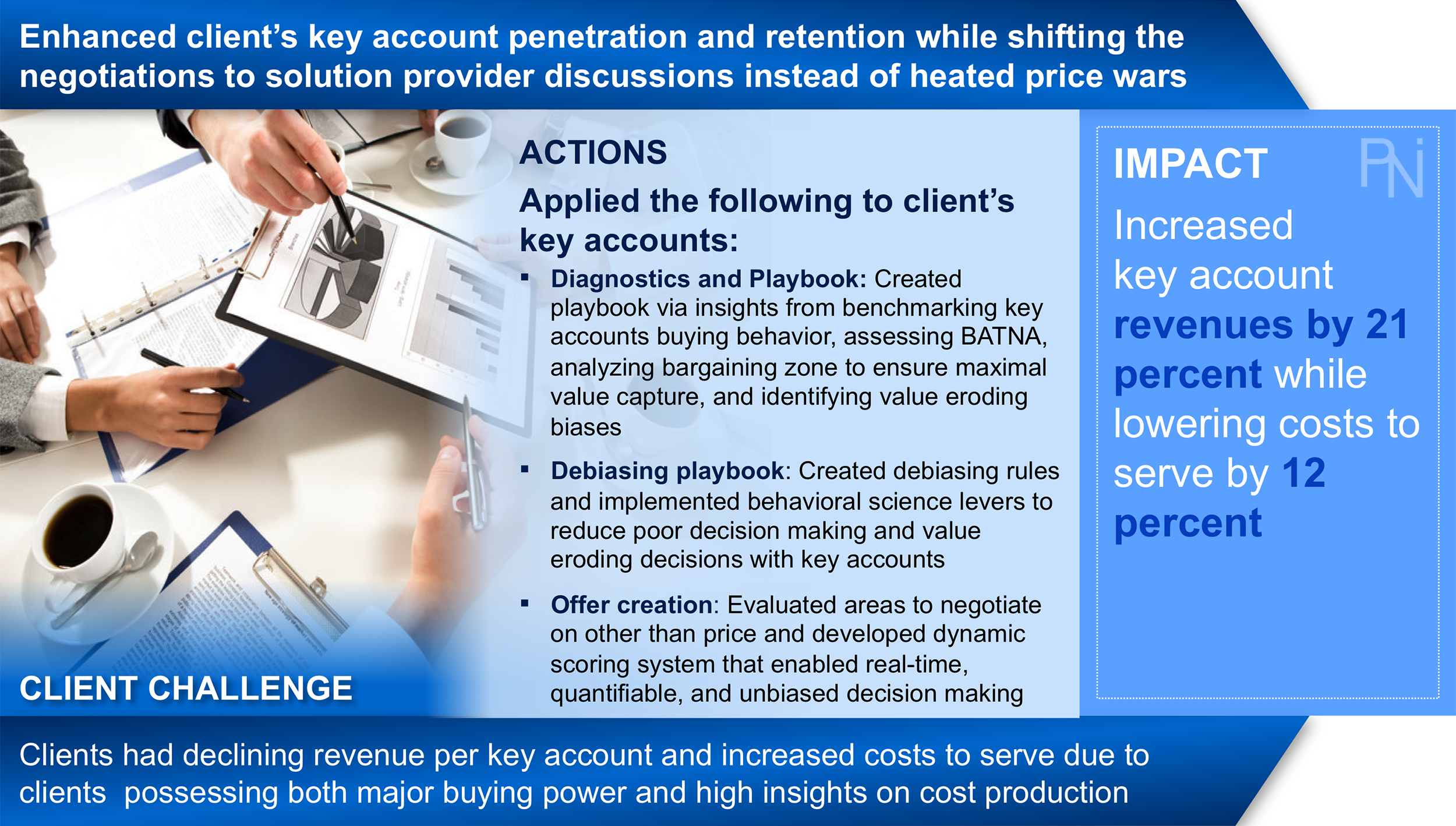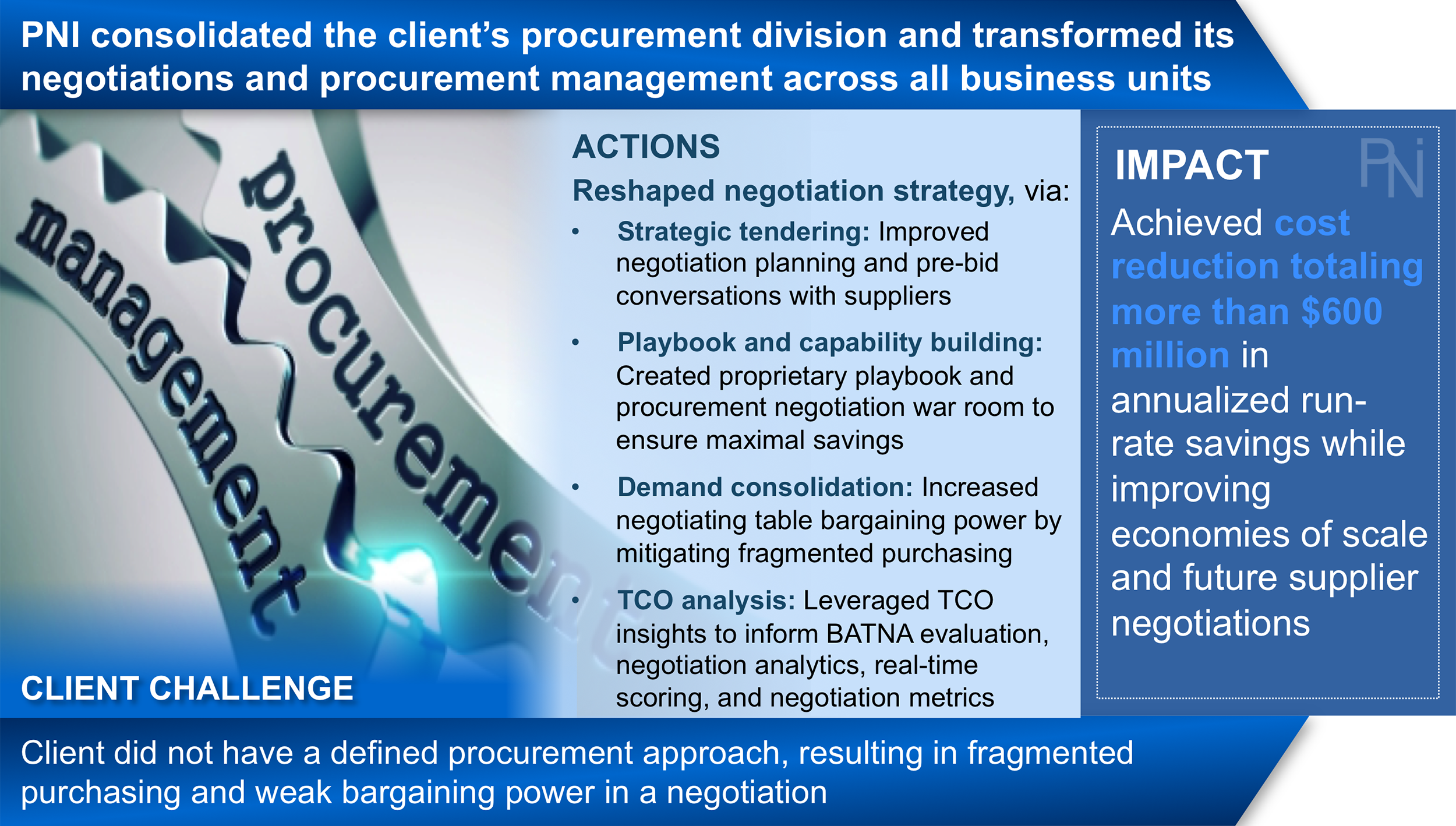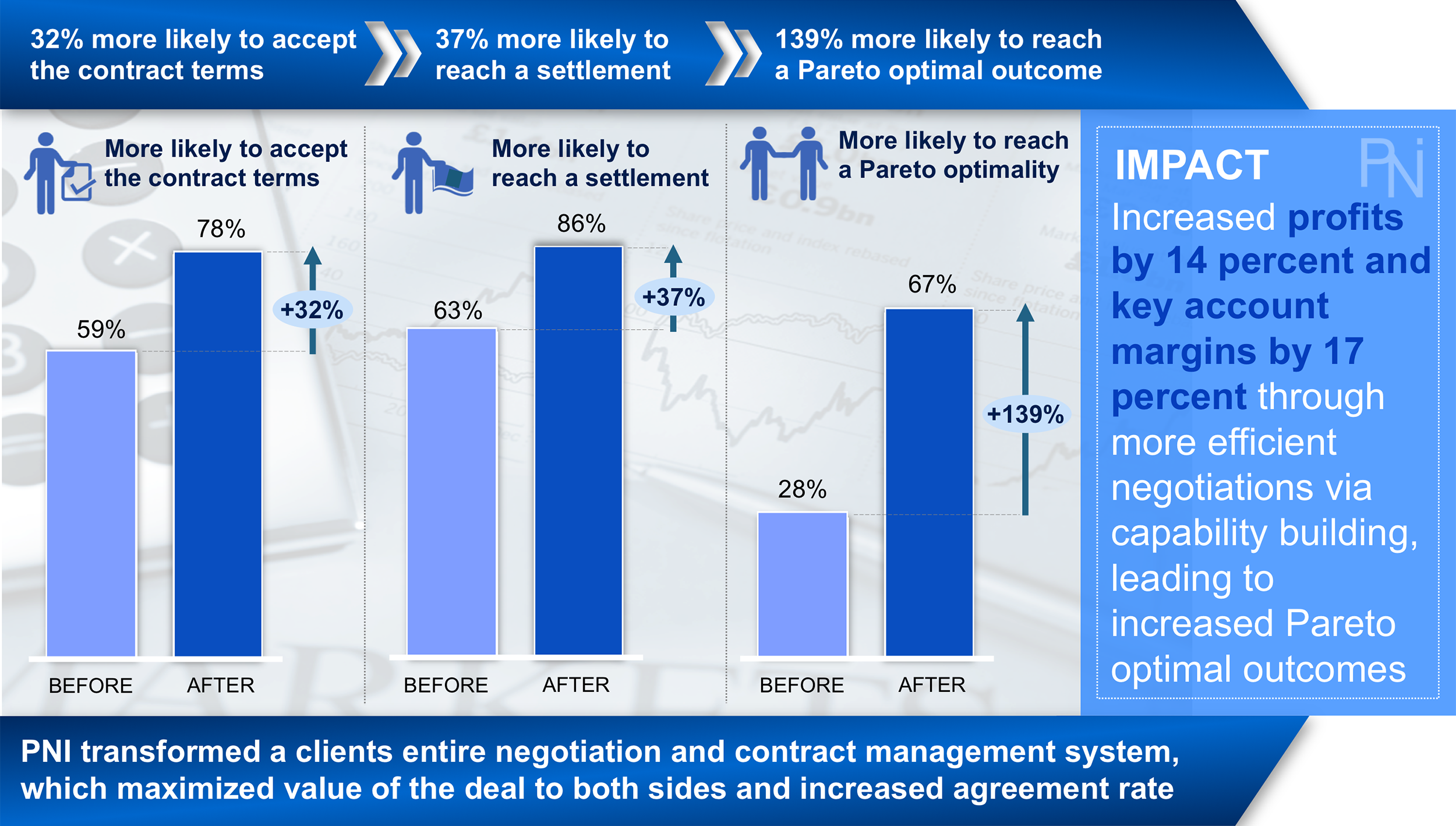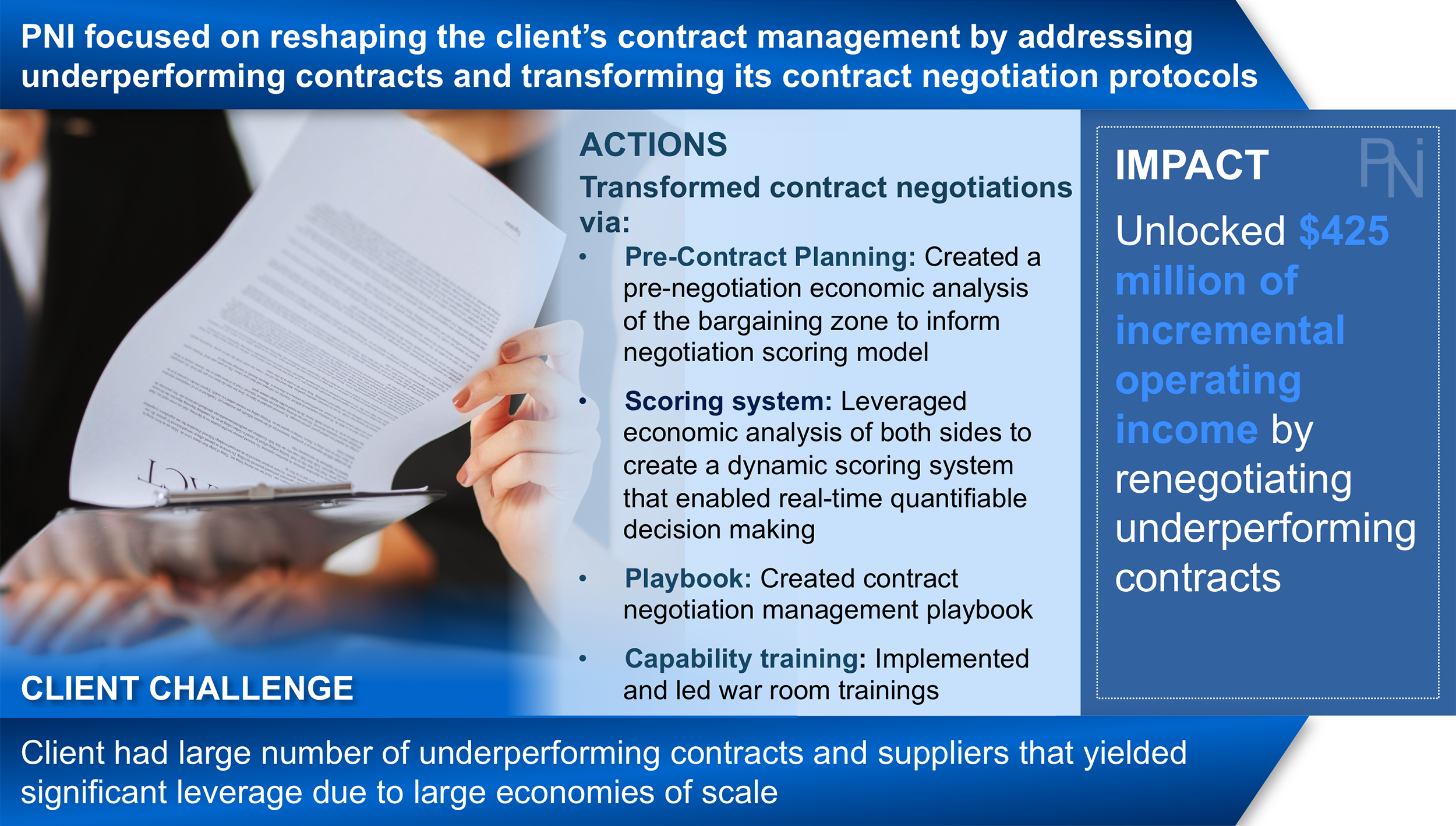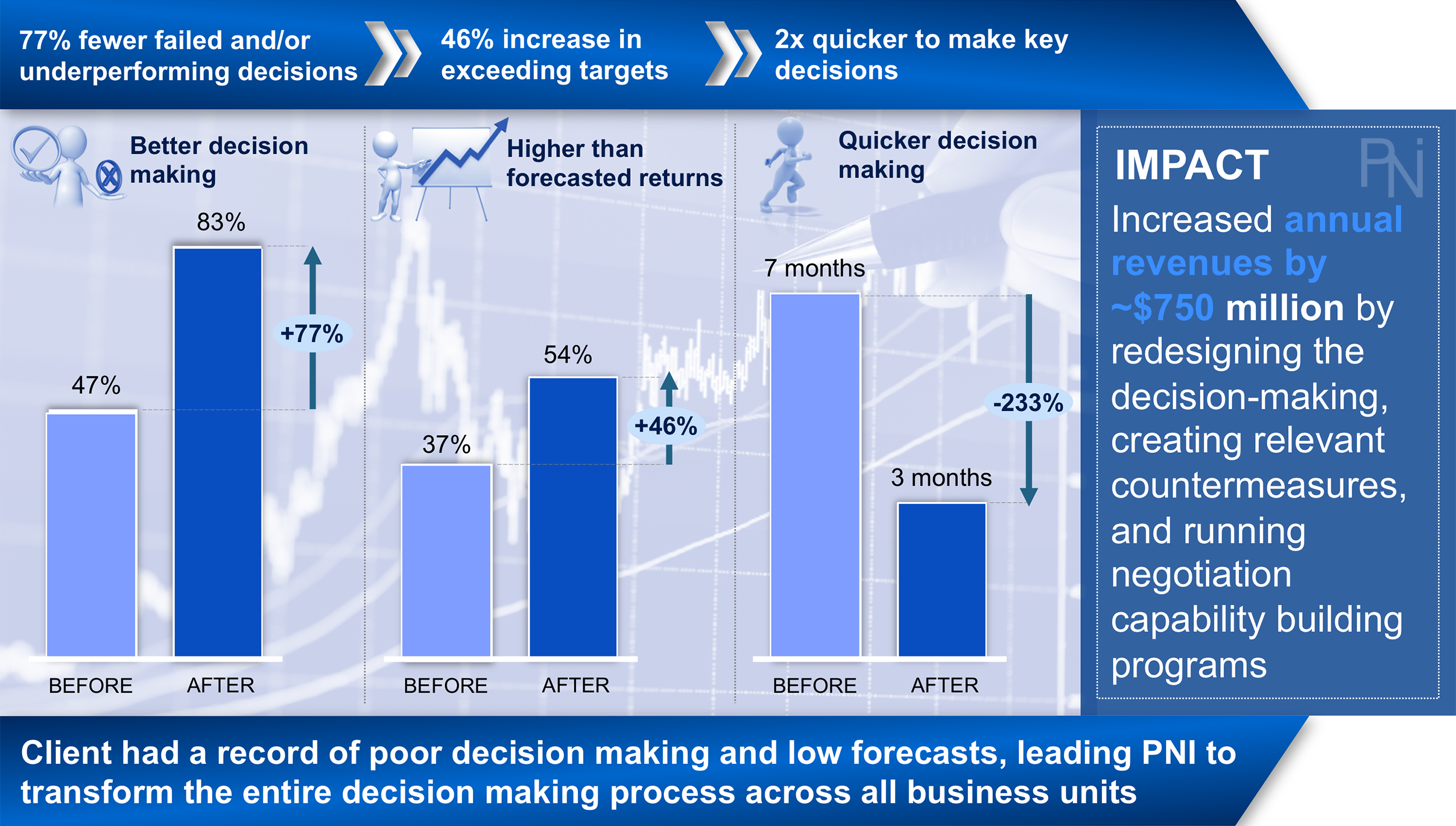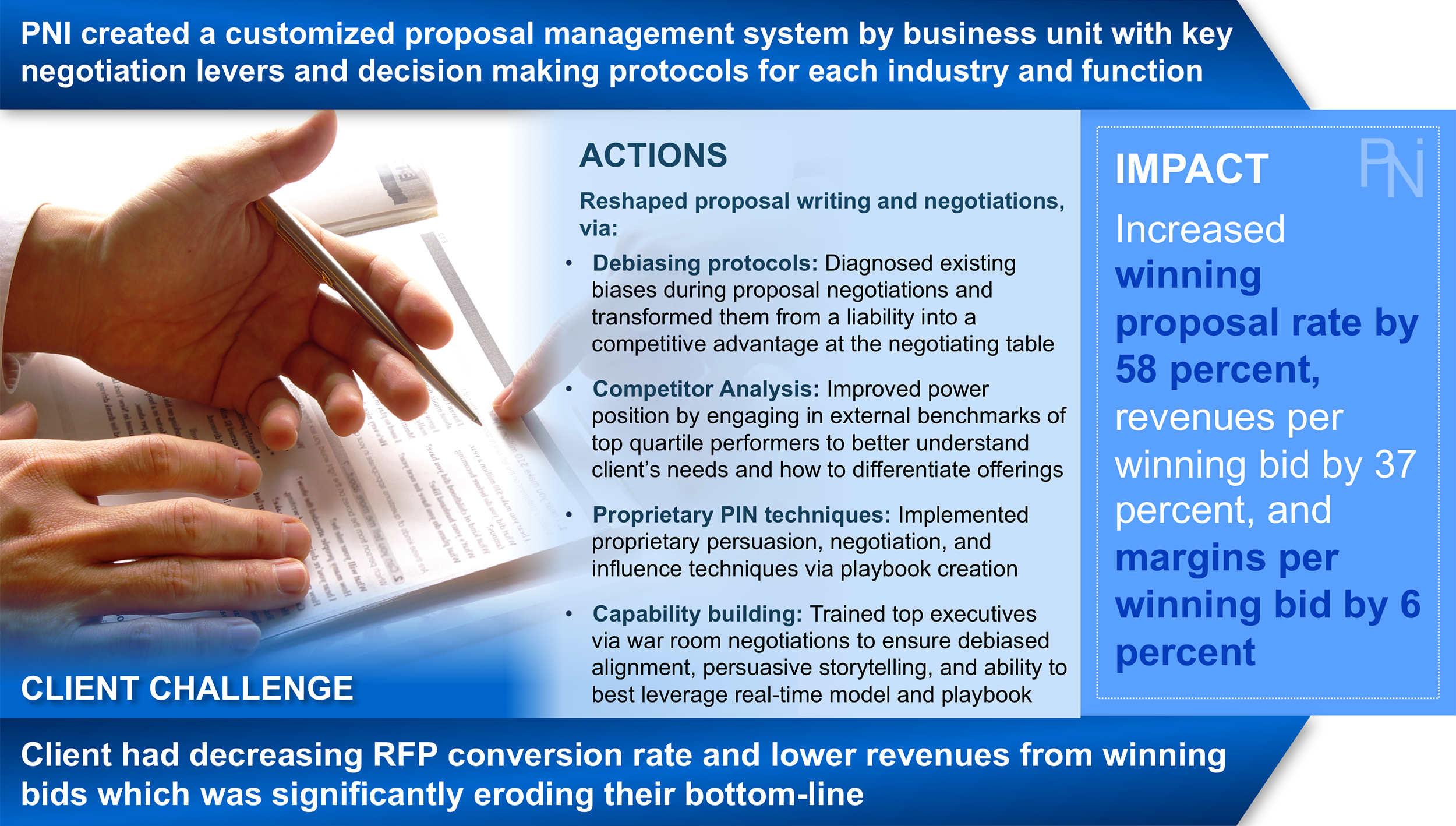Overview
Exhibit 1 (Click to Enlarge)
Sales divisions often represent a significant portion of a company's revenue. Moreover, this substantial revenue generating business unit can consist of thousands of global employees, leading to a large variance in the sales and customer experience. Successful organizations understand the importance of effective selling, ensuring top-quartile performance capabilities across the sales function. However, we’ve seen that sales force effectiveness is more often than not full of significant variances, gaps, and inefficiencies which lead to customer pain points, lost sales, and profit erosion. To combat such value destruction we leverage our proprietary 9-step sales framework in transforming the entire sales function, which drives significant and sustainable growth across the enterprise (See Exhibit 1).
Exhibit 2 (Click to Enlarge)
Such sales transformations are vital because the days of being successful on merely a differentiated product are over. Without creating a distinctive sales team that offers a world-class customer experience the product alone will fail. This resonates more deeply than ever because disruption across B2C retail, with Amazon leading the way, has forever changed customer’s shopping expectations across all industries and in both the B2C and B2B spaces. Simply, customers make no differentiation between buying, as world-class sales and customer experience are industry agnostic. To the customer, shopping is shopping – plain and simple. This has left a large customer experience “sales gap” between what customers expect and what they actually receive in their sales cycle, equating to a poor customer experience, decreased lifetime value, low loyalty, decreased advocacy, and ultimately significant sales erosion (See Exhibit 2).
Exhibit 3 (Click to Enlarge)
Many firms, in an effort to combat this gap, throw excessive money at marketing, branding, products, and digital platforms instead of actually fixing the root problem – poor sales capabilities and customer service. Thus, declining customer loyalty (i.e., lower revenue) combined with additional, yet poorly allocated, investments (i.e., higher costs) create a vicious profit destroying machine. Simply, inefficient investment costs that are aimed at correctly a bottom quartile sales function can easily trump revenue benefit meaning the company is going out of business that much more quickly (See Exhibit 3). We take companies through a rigorous rethinking of the entire sales process by uncovering hidden opportunities, identifying inefficiencies, and transforming the sales function into the revenue generating machine it is meant to be.
Exhibit 4 (Click to Enlarge)
In addition, we leverage our proprietary and holistic Marketing Trifecta™ framework, a three phase – nine step marketing campaign platform (See Exhibit 4). This marketing transformation model allows companies to greatly improve brand equity while also (1) driving NPS shifts from the bottom to top quartile and (2) witnessing marketing ROI improvements anywhere from 30 percent to over 3X. To highlight, this framework consists of three groups of marketing initiatives across (1) website and mobile marketing, (2) social fueled channels, and (3) real-time and artificial intelligence (AI) initiatives. In its simplest form, within each of these three groups there are three core categories. Three years ago winners were those that leveraged at least one of the core categories within Groups 1 and 2. Today, winners must leverage all three categories across Groups 1 and 2. Finally, by 2020, winners will be those that leverage all nine categories across each of the three groups. This platforms allows our clients to create streamline, convenient, and highly personalized shopping experiences while at the same time optimizing ROI, brand awareness, and conversion rates across a holistic yet omnichannel array of marketing initiatives.
In addition to our sales transformation framework, we also implement many of our digital, marketing, and customer experience transformation journey steps into our sales turnarounds. This ensures the entire enterprise is empowered to collaborate together in driving the greatest top and bottom line impact (See Exhibits 5, 6, and 7).
Digital Transformations
Exhibit 5 (Click to Enlarge)
Marketing Transformations
Exhibit 6 (Click to Enlarge)
Customer Experience Transformations
Exhibit 7 (Click to Enlarge)
Transformation - Overview -
Sales Transformation Journey
- 9 Step Journey Overview -
We leverage our proprietary sales transformation framework which consists of a holistic nine-step process, ensuring an embedded and sustainable transformation across the enterprise. This includes (1) employee engagement, (2) cross-functional collaboration, (3) capability building, (4) product strategy, (5) digital transformation, (6) channel capabilities, (7) sales team reallocation, (8) CRM and pipeline optimization, and (9) customer experience. In its simplest form, this nine-step framework is distilled into three phases, specifically: (1) employee engagement, (2) product strategy, and (3) customer experience. See below for an overview of each of the transformation phases and accompanying steps.
Sales Transformation Framework
- 9 Step Overview -
PHASE 1 - STEP 1
Customer engagement and thus sales success is highly correlated with employee engagement. For every $1 invested in improving employee engagement an up to $4 ROI can be seen with customers. With only 30 percent of employees engaged in their work the investment decision is simple. Simply, if you want to drive growth and create raving customers, first create raving employees.
PHASE 1 - STEP 2
Internal company competition is often fiercer than external competition. This produces silos, misaligned incentives, and value destruction across sales, marketing, customer experience, and brand. Sales winners are not those with size but rather those with speed. However, without top cross-functional collaboration speed, personalized customer experiences, and ultimately sales will be suboptimal.
PHASE 1 - STEP 3
Employees are a company’s greatest assets so it should invest in them. However, not all sales training is equal. To create engaged employees sales training must also be engaging, combining the best of classroom, hands-on, and experiential (war-room) learnings. In turn, firms will create a far more capable sales force that will in turn be inspired to sell more and create "wow" customer experiences.
PHASE 2 - STEP 4
To ensure sales productivity and customer satisfaction, companies must keep a constant pulse on its product portfolio. Simply, companies must consistently perform robust product segmentation that is concurrently cross-referenced with rigorous customer segmentation. When leveraged together, such insights can improve product viability, sales health, brand strength, and customer success.
PHASE 2 - STEP 5
Digital disruption across B2C retail, with Amazon leading the way, has permanently shifted customer’s sales expectations in both B2C and B2B spaces. Simply, world-class sales and customer experience is industry agnostic. To the customer, shopping is shopping. This has left a large “sales gap” between what customers expect and what they receive. Implementing digital platforms is key to closing this gap.
PHASE 2 - STEP 6
Customers regularly use different interaction channels throughout the purchase cycle and two-thirds come away frustrated by inconsistent experiences. Customers now expect “wow” moments that are consistent, seamless and omnichannel in nature. Sales must not only meet but also exceed these needs by offering personalized experiences instead of merely transactional touch points.
PHASE 3 - STEP 7
Today’s buyers are digitally savvy, where even in B2B over 50% of buyers are millennials. Winners are thus those with speed as up to 75% of buyers prefer not meeting F2F but rather desire answers whenever, wherever they like. Reallocating inside and outside sales is essential to maximizing costs and exceeding customer expectations. In addition, to drive personalized customer experiences, 50-60% of sales should be in a support role.
PHASE 3 - STEP 8
Sales success begins and ends with its pipeline. Companies must ensure (1) pipeline optimization for sustainable growth, (2) CRM maximization, leveraging both key CRM and pipeline insights, (3) robust segmentation that drives key customer and product insights, and (4) transparency that includes company wide dashboards and frequent goal tracking as a gateway for ensuring focus and alignment.
PHASE 3 - STEP 9
Customer engagement is often the real indicator of health. Simply, sales experiences are industry agnostic with service excellence acting as a key driver for either profit growth or value destruction. Companies across all industries and in both B2C and B2B spaces must keep a constant pulse on its level of personalized service excellence, ensuring high customer engagement, improved loyalty/advocacy, and higher lifetime value.
Our Approach
Sales Transformation Process
- Our Approach & Frameworks by Phase -
Exhibit 8 (Click to Enlarge)
Exhibit 9 (Click to Enlarge)
As previously noted, in its simplest form, the aforementioned nine-step framework is distilled into three key phases, covering (1) employee engagement, (2) product strategy, and (3) customer experience (See Exhibit 8). By transforming the sales function across these three core phases and ultimately the accompanying nine-steps, sales teams radically transform themselves and close the sales gap by exceeding rather than simply meeting customer expectations.
In addition to our sales framework, we also implement many of our digital transformation journey steps into our sales force effectiveness optimizations. This ensures the entire sales force is empowered to drive the greatest service excellence and revenue growth in today's digitally disrupted landscape (See Exhibit 9). Click HERE to learn more about our proprietary digital transformation journey engagements and how we leverage them to drive significant growth within the sales function.
Sales Transformation Frameworks by Phase
Phase #1
Employee Engagement
Step #1. Employee engagement, organizational health, and culture
Step #2. Cross-functional collaboration
Step #3. Capability building creation and implementation
Frameworks
- Phase 1 -
Phase #2
Product Strategy
Step #4. Product portfolio analysis and GTM strategy
Step #5. Digital transformation
Step #6. Channel and channel partner strategy
Frameworks
- Phase 2 -
Phase #3
Customer Experience
Step #7. Sales team and sales ops/admin reallocation
Step #8. Pipeline & CRM optimization
Step #9. Customer engagement transformation
Frameworks
- Phase 3 -
The Marketing Trifecta™
Marketing for the Digital Age
- The Marketing Trifecta -
Exhibit 10 (Click to Enlarge)
In today’s highly volatile and digital first landscape, every organization - no matter the industry - must become a technology company first. The same holds true for marketing success. Simply, traditional marketing is a thing of the past with ROI unlocking campaigns needing to be technology driven and digital first in nature. In addition, enterprises must be continually reinventing their marketing campaigns as consumer expectations and needs are constantly evolving. As such, we leverage our proprietary Marketing Trifecta™, a three phase – nine step marketing campaign platform that allows companies to witness marketing ROI improvements anywhere from 30 percent to over 3X while also witnessing NPS shifts from the bottom to top quartile (See Exhibit 10). Simply, our transformations leverage marketing as the powerful digital tool that it is in (1) modernizing a brand and ensuring omnichannel experiences, (2) improving marketing ROI, and (3) driving significant top and line improvement as witnessed by customers that stay longer, purchase more, and tell their friends.
To highlight, this transformation journey platform consists of three groups of marketing initiatives including: (1) website and mobile marketing platforms, (2) social fueled channels, and (3) real-time and artificial intelligence (AI) initiatives. In its simplest form, within each of these three groups there are three core categories. Three years ago winners were those that leveraged at least one of the core categories within Groups 1 and 2. Today, winners must leverage all three categories across Groups 1 and 2. Finally, by 2020, winners will be those that leverage all nine categories across each of the three groups. Ultimately, this platform allows our clients to create streamline, convenient, and highly personalized marketing and shopping experiences while at the same time optimizing ROI, brand awareness, and conversion rates across a holistic yet omnichannel array of marketing initiatives.
The Marketing Trifecta™ Explained
Group 1
- Mobile & Desktop Marketing Platforms -
SEARCH OPTIMIZATION
In today's highly saturated corporate landscape, search is perhaps the most powerful and easily accessible tool for increasing customer traffic to both online and offline channels. However, all traffic is not created equal. As such, SEO and SEM optimizations must not only drive greater unique visitors but also increase “quality” traffic consisting of customers with purchasing intent. As such, and because the search landscape is fluid with ever-changing algorithms, enterprises must continually invest and reinvent its search campaigns in order to stay viable.
ONLINE PERSONALIZATION
Without creating engagement, no amount of quality traffic will equate to improved conversions. Accordingly, personalized website experiences across both desktop and mobile is vital. Unfortunately, most users witness a fungible marketing and shopping experience. Instead, companies must leverage AI and the vast reservoir of data to drive unique user experiencers at a segmentation of 1, including (1) custom hero images, (2) tailored product recommendations, and (3) personalized offers, to name a few. Such an approach will improve CX, ROI, and conversions.
TEXT & EMAIL CAMPAIGNS
Today’s consumers have lower attention spans. Indeed, thanks to a mobile first transition and a saturation of high quality options quickly at a customer's disposal, marketing must ensure near immediate engagement. While email campaigns have been a staple marketing lever, open rate is declining in large part thanks to a mobile first, text heavy landscape. Simply, email open rates hover at ~10 percent while text hovers at ~90 percent. While email personalization can partially close this gap, text offers significant marketing ROI yet is more often overlooked than leveraged.
Group 2
- Social Driven Channels -
SOCIAL MEDIA ENGAGEMENT
Optimizing social media engagement represents low hanging fruit for most organizations. Indeed, in today’s social driven landscape where customers have the ability and power to sway public opinion, world-class social media capabilities have never been more vital. Simply, by optimizing social media channels companies can (1) improve global brand engagement and awareness, (2) increase online and offline traffic, (3) drive greater customer loyalty, (4) create organic brand influencers, and (5) capture new customer segments, each of which drives greater ROI and brand equity.
CONTENT MARKETING
Content creation across blogs, social media, and videos allows companies to transition from "telling" to having a conversation with its customers. Simply, this is a powerful yet often overlooked lever for improving relationships and engagement. Today's consumers expect experiences - not only transactional touchpoints. Thus, rich blog and social media posts can create such experiences, ensuring increased engagement, improved friend referrals, and greater brand loyalty. Regarding videos, the ROI is clear with over 60 percent of users more likely to buy after interacting with a brand's video.
LOYALTY PROGRAMS
The increasingly crowded competitive landscape has made it all the more challenging to attract and maintain the loyalty of customers. Simply, consumers are not only more price-conscious than brand-loyal but also more sophisticated, expecting experiences that exceed rather than simply meet expectations. A loyalty program can ensure a smooth transition away from discounted pricing while also providing key customer insights for (1) driving world-class customer experiences, (2) creating personalized marketing at a segment of 1:1 and (3) ensuring a sustianble growth sales engine.
Group 3
- AI & Real-Time Marketing -
VIDEO & STREAMING
While traditional television marketing is by no means dead it has certainly been reinvented thanks to streaming services and online video content. Simply, video marketing has taken on a much broader landscape because customers need tailored content that quickly engages and drives both awareness and intent. With products that have associated videos getting ~2.5 times greater conversions than products without, investment in quality video content has never been a more ROI generating marketing channel.
LOCATION BASED MARKETING
Location based marketing (geolocation) is the future of marketing as it provides real-time interaction with customers. By leveraging (1) analytics, (2) mobile apps, and (3) location sensing technologies (e.g., GPS) enterprises can radically improve personalization, purchasing intent, and the overall customer experience via real-time offers, incentives, and insights. While customers must opt-in to location sensing technologies such as the company's app, they are oftentimes willing to do so in return for a better experience or reward.
VOICE & EMOTION MARKETING
Purchases are often emotional ones, and if consumers are feeling uncertain or stressed, they are less likely to buy. By leveraging AI, facial recognition, and wearable technology such as smart watches, companies can mitigate these issues by personalizing marketing in real-time by (1) reading a customer's emotions and body language, (2) determining the emotion in a consumer’s voice, and (3) reading customer’s heart rates and stress levels. Indeed, such insights drive ROI maximizing, customer centric marketing.
Examples of Our Work
Client Results
We have a proven track record of increasing overall sales while also raising per sale revenue and margin. By transforming the most important aspects of the sales process, our clients have seen average revenue increases of 12 to 33 percent in the first 12-24 months and margin increases anywhere from 6 to 39 percent. Simply, we have helped clients unlock enormous bottom-line and top-line improvements via sales force effectiveness transformations. Examples of our sales work include:
Exhibit 11 (Click to Enlarge)
- Example #1 (See Exhibit 11): Increased sales by $825M, reduced sales costs by 23 percent, and decreased new hires by 13 percent via: (1) implementing a full-scale sales transformation program with accompanying playbooks by product and demographic, (2) reallocating inside and outside sales as well as bolstering sales ops to ensure a more personalized experience for digitally savvy customers, (3) creating and implementing a sales decision-making management system, and (4) building and leading a war room capability training across all sales units.
Exhibit 12 (Click to Enlarge)
- Example #2 (See Exhibit 12): Improved sales force efficiency and mitigated customer experience pain points, leading to a 27 percent sustainable sales increase, 51 percent more cross-selling, and a 7 percent increase in key account margins.
Exhibit 13 (Click to Enlarge)
- Example #3 (See Exhibit 13): Increased sales by 33 percent with no additional hiring, while also increasing margins by 9 percent via: (1) diagnosing sale’s inefficiencies by product and region, (2) creating performance metrics and playbooks by product and demographics, and (3) implementing train-the-trainer and war room capability building via leveraging our 10 best sales negotiation practices.
Additional Benefits
Revenue Increase: Our clients witness average revenue increases of 12 to 33 percent in the first 12-24 months followed by an additional 5 to 21 percent of sustainable YoY revenue improvement
Pareto Optimal Outcomes: Our clients are ~139 percent more likely to reach a Pareto outcome, ensuring mutually beneficial sales agreements and long-term relationship benefit
Sales Conversion Optimization: Our clients close more sales, experiencing a 19 to 48 percent increase in sales conversions while also witnessing 12 to 57 percent greater cross-selling
SEE BELOW OR CLICK HERE TO SEE MORE CLIENT RESULTS
Additional Client Results
Additional Transformation Services
Our customer experience work ensures top customer engagement/loyalty, top quartile net promoter scores, and a pain-point free customer journey, equating to 12 percent and greater revenue increases
Our digital transformation engagements drive significant growth, innovation, and organizational success ensuring distinctive (1) employee empowerment, (2) product differentiation & (3) customer experience
Our M&A and PE engagements optimize purchase price while ensuring target synergies are fully reached, resulting in 28 to 77 percent higher RTSR and ~37 percent increase in deal closings
Our procurement and supply chain transformations help corporations achieve sustainable cost savings from 16 to 63 percent typically followed by additional cost savings of 2 to 4 percent annually
We help clients unlock key account value while improving the customer journey via elimination of pain points, enabling 11 to 17 percent revenue growth and 8 to 15 percent margin increase
Our contract transformations increase profits up to 31 percent, improve the likelihood of reaching an agreement by ~95 percent, and increase chances of Pareto efficiency by ~139 percent



































































